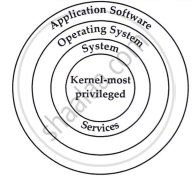Topics
Introduction to Microprocessors and Organization of 8085
Instruction Set and Programming of 8085
Introdcution to Inted X-86 Family
Introduction to Microcontroller
Networking Technology
- Introduction to Networking
- Types of Networks
- Multiplexing
- Study of Transmission media
- Coaxial cable (Cable Media)
- Twisted pair cable
- Fiber Optic Cable
- Unbounded (Wireless) Media
- Access Methods
- Network Topologies
- Ethernet (Network Architectures)
- Token-Ring (Network Architectures)
- Internet protocols
- Introduction to connectivity devices
- Priviliged levels for multiuser or multitasking operating system
Introduction to Advanced Microprocessors
The evolution from 4-bit to 32-bit microprocessors brought significant advancements, though the shift from 16-bit to 32-bit didn't introduce a completely new architecture. Advanced 32-bit microprocessors, often paired with numeric coprocessors for faster arithmetic operations, are powerful computing devices used in general-purpose computers and graphic systems. These systems require sophisticated operating systems and applications, supporting multiuser and multitasking environments, where the CPU can handle multiple users or tasks simultaneously by switching between software efficiently.
Priviliged levels for multiuser or multitasking operating system
The advanced microprocessors offer a special way of operating which is called the supervisory, protected or privileged mode. When microprocessor is operated in this mode, it may have access to a number of special instructions, additional registers and other features.

Data protection techniques are used to keep two users or tasks from accessing the same data at the same time.
